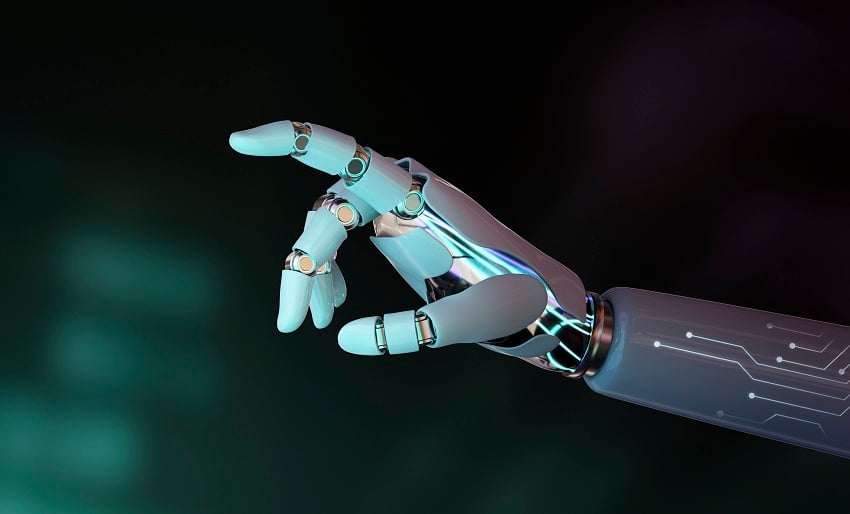Services List
One subfield of Artificial Intelligence (AI) is creating ripples in the ever-changing landscape: Generative AI. From text and photos to audio and video, this technology is transforming how we generate and perceive content. But what is Generative AI and how does it work?

Covered in this article
Understanding Generative AI
The Mechanics of Generative AI
Generative AI in Action
Generative AI in Business
Ethical Considerations
The Future of Generative AI
Frequently Asked Questions About Generative AI
Understanding Generative AI
Generative AI is a broad term used to describe any AI that can create new content, such as text, images, video, audio, code, or synthetic data. It's an umbrella term that includes learning algorithms that make predictions and those that can use prompts to autonomously write articles and paint pictures.
Generative AI works by training an algorithm on a dataset, after which it can produce new outputs that are similar to the data it was trained on. This technology requires more processing power than discriminative AI, making it more expensive to implement but also more powerful in its capabilities.
The Mechanics of Generative AI
Two of the most commonly used generative models are Generative Adversarial Networks (GANs) and Variational Autoencoders (VAEs). In a GAN, two machine learning models are trained simultaneously: a generator and a discriminator. The generator's job is to create new outputs that resemble the training data, while the discriminator evaluates the generated data and provides feedback to the generator to improve its output.
On the other hand, a VAE is a single machine learning model trained to encode data into a low-dimensional representation that captures the data's important features, structure, and relationships. The model then decodes the low-dimensional representation back into the original data, allowing it to learn a compact representation of the data distribution, which it can then use to generate new outputs.
Generative AI in Action
Generative AI is already being used in various applications, from art and music generation to writing and research. For instance, OpenAI's GPT-3 language model can generate text based on prompts provided by the user. Similarly, AI models like DeepDream Generator and DALL·E2 can create surrealistic images and new images from text descriptions, respectively.
In the music realm, AI apps like Amper Music and AIVA use AI algorithms to compose original music in various genres and styles. These applications demonstrate the potential of Generative AI as a tool to enhance human creativity, categorising it as a type of augmented artificial intelligence.

Generative AI in Business
Generative AI is also finding its place in the business world. It can create content that seems to be written by humans, passing the Turing test established by notable mathematician and cryptographer Alan Turing. This has led to concerns that generative AI might replace humans in jobs involving publishing, broadcasting, and communications.
However, proponents argue that while generative AI may replace humans in some jobs, it will create new ones because there will always be a need for a human in the loop (HiTL). Humans are still required to select the most appropriate generative AI model for the task at hand, aggregate and pre-process training data, and evaluate the AI model's output. Humans still need to make the decisions, providing judgement and expertise that the AI model itself may not have.
Ethical Considerations
As Generative AI continues to evolve and become more integrated into our daily lives, it's essential to consider the ethical implications that come with it. These considerations revolve around accountability, privacy, and the potential for misuse.
Accountability and Transparency
One of the primary ethical concerns with Generative AI is accountability. When AI generates content, it can be challenging to trace the output back to the responsible parties. For instance, if a generative AI model creates a deepfake video or fake news, who is held accountable? The creator of the AI model, the user who generated the content, or the AI itself? This lack of clear accountability can lead to misuse of the technology and difficulty in enforcing laws and regulations.
Transparency is also an important concern. Even specialists may struggle to understand how an AI model makes decisions or develops information. This lack of transparency, dubbed the "black box" dilemma, can breed mistrust and abuse.
Privacy
Generative AI models are typically trained on large datasets, which may include personal or sensitive information. While most training data is anonymised and aggregated, there are still concerns about privacy and the potential for data breaches. Furthermore, as Generative AI becomes more sophisticated, there's a risk that it could generate realistic personal data, leading to potential privacy infringements.
Potential for Misuse
Generative AI has the potential to be used maliciously. For example, deepfakes, which are realistic AI-generated videos of people saying or doing things they never did, can be used to spread disinformation or blackmail individuals. Similarly, AI-generated text could be used to create fake news or fraudulent content.
The Future of Generative AI
The future of Generative AI is promising. As technology evolves, it's poised to solve more complex problems and enhance creative workflows. It could potentially overhaul processes to free individuals to solve completely new challenges with a fresh frame of mind. Through collaboration and experimentation over time, we'll uncover even more benefits from generative AI.
To summarise, Generative AI is a powerful technology that is revolutionising the way we produce and interact with material. As we continue to investigate its possibilities, it is critical that we approach its development and use properly, taking into account both its enormous benefits and ethical consequences. As we negotiate this thrilling frontier, one thing is clear: Generative AI represents the future of creativity, not simply AI.
Frequently Asked Questions About Generative AI
What is Generative AI?
Generative AI is a type of artificial intelligence that can create new content, such as images, text, or music, that is similar to human-generated content. It works by training a model on a dataset, after which it can produce new outputs that resemble the data it was trained on.
How does Generative AI work?
Generative AI works by using algorithms like Generative Adversarial Networks (GANs) and Variational Autoencoders (VAEs). These algorithms are trained on large datasets and learn to generate new content that is similar to the training data. The generated content can be as diverse as text, images, music, or even synthetic data.
What are some applications of Generative AI?
Generative AI has a wide range of applications. It's used in art and music generation, writing and research, and even in business for tasks like content creation and data synthesis. It's also used in the development of video games, where it can generate new levels or characters, and in healthcare, where it can help create synthetic data for research.
What are the ethical considerations of Generative AI?
The rise of Generative AI has sparked a debate about the ethics of using technologies that simulate human creativity. Key ethical considerations include accountability (who is responsible for the content generated by AI), privacy (how personal data is used in training AI models), and the potential for misuse (such as creating deepfakes or fake news). As we continue to explore the potential of Generative AI, it's crucial to approach its development and use responsibly, considering both its immense benefits and ethical implications.






